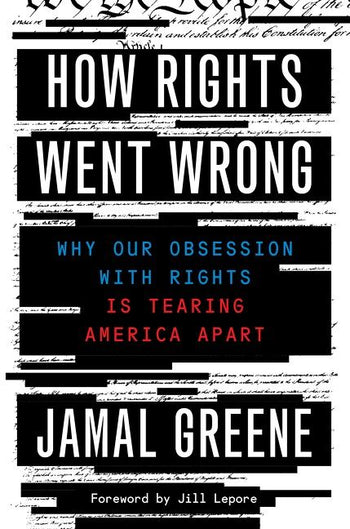Greene is right that American conceptions of rights have evolved dramatically over time. The framers applied the Bill of Rights to the federal government only, not the states; indeed, they saw state and local governments (and juries) as the principal protectors of rights. As a result, the Supreme Court decided very few constitutional rights cases in its first one hundred years. (Yet the country was deeply divided during much of that time, suggesting that contemporary conceptions of rights are not a necessary component of partisan fracture.)
Slavery and its legacy illustrated the flaws in the framers’ assumption that states would reliably protect rights, and the Thirteenth, Fourteenth, and Fifteenth Amendments, adopted after the Civil War, imposed broad constitutional rights restrictions on states for the first time. They required states to outlaw slavery and to provide “equal protection of the law,” and forbade them from denying the right to vote on the basis of race and from taking life, liberty, or property “without due process.” In subsequent decades, the Supreme Court increasingly interpreted the Fourteenth Amendment’s due process clause to make virtually all the specific rights guaranteed in the original Bill of Rights enforceable against the states. Collectively, these changes shifted rights enforcement from state and local governments to the federal courts.
But the Supreme Court’s initial forays into actively protecting the constitutional rights of individuals were disastrous. Beginning in the 1890s, it repeatedly struck down laws designed to protect workers and consumers from exploitation by big business, on the grounds that such laws infringed on the “liberty of contract.” When the federal government responded to the Great Depression by enacting comprehensive New Deal legislation, the Court struck down those laws as well. Such decisions led President Franklin Roosevelt to propose increasing the size of the Court, a transparent effort to appoint justices friendly to New Deal legislation. He failed, but the Court ultimately shifted course and gave both Congress and the states broad authority to regulate businesses, illustrating that constitutional rights in the American system are anything but absolute.
In the post–New Deal era, the Supreme Court and constitutional scholars sought to identify interests for which courts particularly needed to intervene: defending the political process by vigorously safeguarding the rights to vote, speak, and associate; and protecting those who cannot protect themselves through the democratic process, such as the criminally accused, dissidents, and members of minority groups. According to this judicial philosophy, the Supreme Court should generally allow disputes about economic arrangements to be resolved democratically but should exercise more skeptical review when the majority seeks to entrench itself, cut off political avenues for change, or trample on the rights of minority groups.
